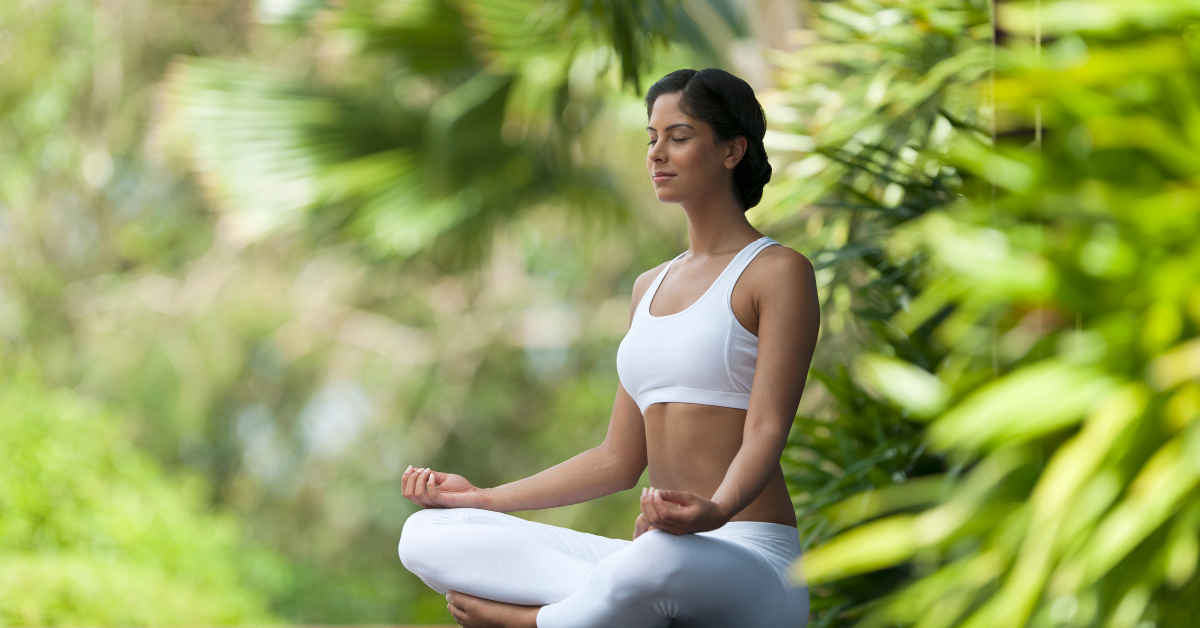Every year on June 21st, something quietly beautiful happens. People from every corner of the world — different time zones, languages, ages — roll out their mats. Some in silence, some to soft music, some guided by a teacher. But all of them, in some way, are returning to themselves.
This year marks the 11th International Day of Yoga, and the World Yoga Day theme — Yoga for One Earth, One Health — couldn’t feel more relevant. Because somewhere along the way, we’ve all realised that our well-being doesn’t stop at our body. It’s connected. To the environment. To each other. To the world that sustains us.

Importance of Yoga Day
When India proposed the idea of an International Day of Yoga to the UN back in 2014, it wasn’t just about promoting an ancient practice. It was a way to offer something timeless—something simple, powerful, and deeply human—to a world that’s always looking outside for answers.
What is the meaning of Yoga? Yoga, in its essence, means union. And it’s not limited to the union of body, mind, and soul. It’s about the thread that connects us to nature, to each other, and the quiet wisdom within.
So, what is Yoga Day and why do we celebrate it? In a world that moves fast, Yoga is the stillness. In a time when everyone’s “doing,” Yoga is the “being.” This day is about remembering that health is not a luxury, but a return to balance, inside and out.
What Does ‘One Earth, One Health’ Really Mean?
At first glance, this year’s theme sounds poetic. But it’s more than that — it’s a call to action. It’s saying, quite plainly, that human health and planetary health are the same.
When we mistreat the Earth, we harm ourselves. Polluted rivers, plastic-filled oceans, disappearing forests — these aren’t just environmental issues. They’re personal. We breathe that air. We drink that water. We eat from that soil. This is the fundamental philosophy of Ayurveda healing. The Panchamahabhuta theory states that we and everything else are made of the same subtle energies.
In the yogic tradition, health is not defined by the absence of disease. The Sanskrit word Swasthya means a state where the body, mind, and senses are in balance — in tune with nature, not fighting it.
And Yoga helps us get there. Not just through movement, but through awareness.
More Than Just Stretching
Let’s be honest — many people first come to Yoga for immunity or physical reasons. A stiff back. Stress. Poor posture. Frequent respiratory issues. And that’s okay. That’s often how the journey begins.
But Yoga is more than just poses. It’s rooted in the Ashtanga path — the eight limbs of Yoga, which include everything from personal discipline to meditation to moral values. These include:
- Yama – moral principles, like Ahimsa (non-violence)
- Niyama – personal observances, like Santosha (contentment)
- Asana – the physical postures
- Pranayama – Yoga breathing exercises
- Pratyahara – withdrawing the senses inward
- Dharana – focused attention
- Dhyana – meditation
- Samadhi – a state of blissful awareness
You don’t need to be able to do a handstand. If you’ve ever sat still and taken a deep breath with full presence, you’ve already touched Yoga.
And slowly, you start to feel the ripple effects. Better sleep. A calmer mind. A more resilient body. A little more space between stimulus and response.
Yoga and Ayurveda: Sister Sciences
While Yoga works on awareness and alignment, Ayurveda brings in healing through daily habits, food, and natural rhythms.
According to Ayurveda, each of us has a unique mind-body type. When these are balanced, we feel good. Energised, grounded, clear. But life pulls us out of balance. And Ayurveda gently brings us back.
When you combine Yoga with Ayurveda living — waking with the sun, eating with the seasons, moving with awareness — health starts to feel less like a chore and more like a natural state. Whether it’s chronic back pain, digestive disturbances, hormonal imbalances, impaired sleep cycles, high blood pressure, respiratory troubles or stress, Yoga can be an effective addition to Ayurveda therapies.
It’s not about restriction. It’s about rhythm.
Health Benefits That Go Beyond the Body
Is Yoga good for health? Absolutely — and not just in the ways you might expect. There’s a quiet transformation that happens when you stick with Yoga. Your digestion improves. Your breathing becomes deeper. Your spine feels flexible. You sleep better, think clearly. Immunity becomes stronger. Joint discomforts get reduced. There are benefits of Yoga for mental health also – your nervous system becomes calmer, you feel grounded, and stress vanishes. Yoga for stress relief can be a game-changer in your emotional well-being.
And something else shifts, too — your ability to stay present. To listen. To pause before reacting. Ancient texts have spoken about this for centuries. One of the most quoted verses from Patanjali’s Yoga Sutras captures it in a single line:
“योगः चित्तवृत्ति निरोधः।”
(Yoga is the calming of the fluctuations of the mind.)
It’s not just philosophy. It’s a felt experience. And it stays with you, long after the mat is rolled up.
Caring for the Earth, Caring for Ourselves
If you’ve ever ended a Yoga session sitting under a tree, or walked barefoot on dewy grass after sunrise, you’ve felt it — that deep, wordless connection to nature.
But here’s the truth: the Earth is out of balance, too. Climate change isn’t abstract anymore. It’s real. And just like our bodies send signals — fatigue, tension, illness — the Earth is speaking too.
Yoga teaches non-possessiveness. To live with less. To take only what we need. To care without clinging.
If we want true health, it can’t just be personal. It has to be planetary.
How You Can Celebrate International Day of Yoga
If you don’t know Yogasanas, that’s okay. Yoga doesn’t ask you to be an expert. It doesn’t care if you can’t touch your toes or sit still for long. It simply invites you to show up — with yourself, as you are. Stiff, restless, curious, tired — come as you are. That’s enough. Yoga begins where you are, not where you think you should be. Try following Ashtanga Yoga if you are not sure of what Yogasanas to follow:
- Start your morning with 5 minutes of alternate breathing. Just sit. Feel your breath. Let it slow.
- Move gently. A few sun salutations, or even just stretching your arms.
- Go outside. Sit under a tree. Watch the clouds. Listen to the wind.
- Eat mindfully. A warm meal. A quiet moment. Fewer screens.
- Speak kindly. To yourself. To others. To the world around you.
More Than a Day
Yes, June 21st is special. But Yoga isn’t about one day. It’s about the way we show up every day. For ourselves. For others. For the planet.
You don’t need to be perfect. Just present.
So this year, as we observe the International Day of Yoga, maybe let it be a little more personal. A little more honest. Not just something to attend — but something to live. And if there’s one prayer to carry in your heart, let it be this ancient one:
“लोकाः समस्ताः सुखिनो भवन्तु।”
May all beings everywhere be happy and free from disease.







